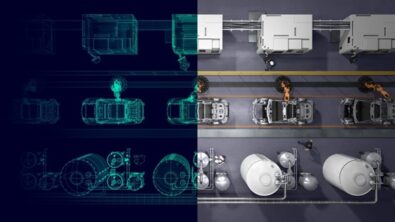The future of digitalization: Building a community of workers

Recently Tosh Tambe, VP, Cloud Strategy and Transformation and Chad Jackson, Chief Analyst and CEO of Lifecycle Insights, had a conversation regarding Xcelerator as a Service and what it means for digital transformation.
This three-part series highlights their conversation and thoughts on the future of digitalization.
Read Part 1: The future of digitalization: A world of complexity
Read Part 2: The future of digitalization: On-premises vs. cloud
Part 3: Building a community of workers
There are some communities that are just natural within the process of your product lifecycle. With one single team, for example, you have a community naturally collaborating using the same tools and connected technologies.
Take one step back and there are different teams, maybe different functional teams, within the same company. This too is another community, which may have challenges when it comes to collaboration.
How can these two silos interact with one another better?
One more step back and now it’s a matter of collaboration within a supply chain. Considering the challenges of two functional teams working within a company, how does the entire ecosystem interact in a productive and efficient way?
It takes enabling easier communication, collaboration and participation in these communities through more connected technology, especially more collaboration enabling technologies.
Cloud capabilities make it easy to imagine new communities forming through technology, similar to public forums that can be integrated into the product and having platforms to actually go seek out help on a particular domain or expertise or technology.
Because no organization exists in isolation, they must interact as part of a wider ecosystem. They must interact with their suppliers, distributors, manufacturers and others. That leads to one of the unique imperatives of Xcelerator, which is its open ecosystem. This bridges the divides between communities and opens the ability for companies to seek expertise, recognition, help, collaboration opportunities on designs and increased ability to have institutional knowledge that’s captured and built.
Expanding the digital enterprise into the wider ecosystem, through sharing of models and data where it makes sense for collaboration and operational optimization, increases the benefits of these interactions.
What this open ecosystem does is it creates a powerful industrial network effect that is only possible by embracing digital transformation and a key benefit to Xcelerator as a Service (XaaS).
It’s more difficult, almost impossible to deliver that same value and benefits without the combination of SaaS platform, like Xcelerator as a Service, and the technology of cloud-based delivery. What makes XaaS stand out is its membership to the portfolio and to a community.
Learn more about Xcelerator as a Service here.

